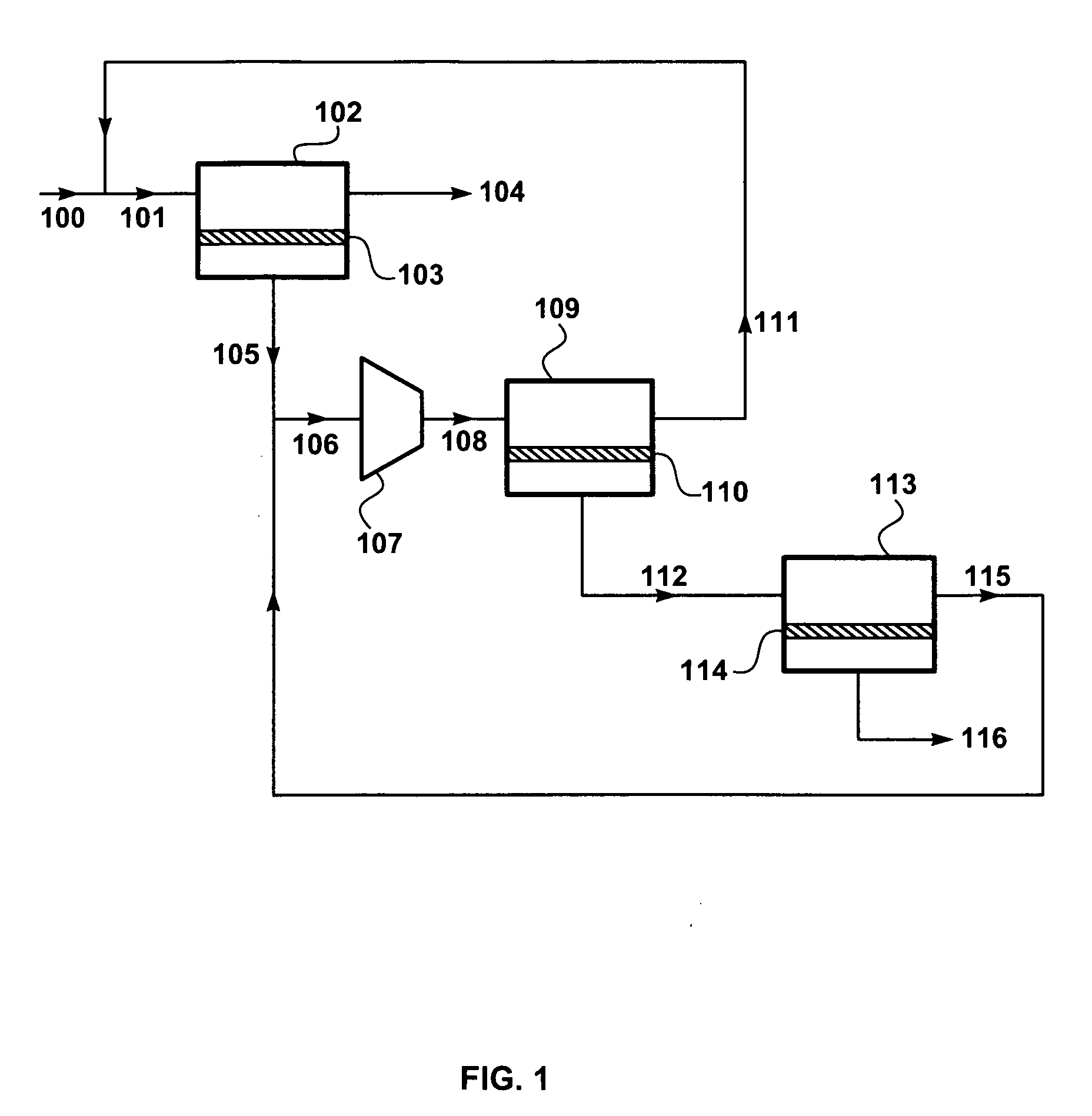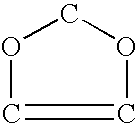Three-stage membrane gas separation process
a gas separation and membrane technology, applied in the field of gas separation membranes, can solve the problems of not meeting the desired composition and recovery specifications, adversely changing the membrane permeation characteristics, and affecting the performance of the membrane, so as to reduce the downtime for maintenance or repair, and improve the recovery of methane.
- Summary
- Abstract
- Description
- Claims
- Application Information
AI Technical Summary
Benefits of technology
Problems solved by technology
Method used
Image
Examples
example 1
Nitrogen Removal, 8% Nitrogen Concentration
[0106]A computer calculation was performed with a modeling program, ChemCad V (ChemStations, Inc., Houston, Tex.), to demonstrate the process of the invention in a basic embodiment to separate nitrogen from methane, as in FIG. 1.
[0107]The calculation assumed that raw gas stream 100 has a flow rate of 1 MMscfd, contains 8% nitrogen, and is delivered to the process at 30° C. and 500 psia. The target for the process was to reduce the nitrogen content of the first residue stream to 4%.
[0108]It was assumed that each membrane stage contains a membrane having a fluorinated dioxole selective layer and providing a permeance for nitrogen of 50 gpu and a permeance for methane of 20 gpu, so that the nitrogen / methane selectivity is 2.5. The permeate pressures for the first and second membrane stages were assumed to be set at 150 psia, and the first permeate was assumed to be recompressed to 500 psia, so that the pressure ratio in the first and second st...
example 2
Nitrogen Removal, 15% Nitrogen Concentration
[0113]The calculation of Example 1 was repeated, this time assuming that raw gas stream 100 contains 15% nitrogen at 30° C. and 500 psia. Other assumptions were the same as Example 1.
[0114]The results of the calculations are summarized in Table 2.
TABLE 2Stream104116100TREATEDTREATEDFEED101RESIDUE105108111112115PERMEATETemp (° C.)3029152111929292828Pressure (psia)5005005001505005001501515Flow rate (MMscfd)1.05.10.74.45.04.10.820.490.33Component (vol %):Methane858596838385748362Nitrogen15154.0171715251738
[0115]As can be seen, the process of the invention was again able to meet the target of 4% nitrogen in the first residue stream, 104. The third permeate stream in this case contains 38% nitrogen, and the methane recovery is about 80%. A higher methane recovery would be possible under the same process operating conditions if the membrane selectivity were slightly higher.
example 3
Carbon Dioxide Removal, Comparative Calculations
[0116]Three computer calculations were performed to model the treatment of a raw natural gas stream that is out of specification with respect to carbon dioxide. The calculations compare the performance of the process of the invention with a process using only two membrane separation stages and with a process using three stages, with compression between the stages.
[0117]In all cases, the raw gas entering the process was assumed to have the following composition:
Methane:90.1%Carbon dioxide:5.1%Balance4.8%(C2+ hydrocarbons / / nitrogen / water vapor):
and to be at a pressure of just under 1,000 psia. The calculations were carried out assuming that the same amount of membrane area was available for each separation stage in each calculation. In all cases, the goal was to reduce the carbon dioxide content of the gas to 2%. For the first calculation, according to the process of the invention, the raw gas flow rate was assumed to be about 6 MMscfd.
[...
PUM
 Login to View More
Login to View More Abstract
Description
Claims
Application Information
 Login to View More
Login to View More - R&D
- Intellectual Property
- Life Sciences
- Materials
- Tech Scout
- Unparalleled Data Quality
- Higher Quality Content
- 60% Fewer Hallucinations
Browse by: Latest US Patents, China's latest patents, Technical Efficacy Thesaurus, Application Domain, Technology Topic, Popular Technical Reports.
© 2025 PatSnap. All rights reserved.Legal|Privacy policy|Modern Slavery Act Transparency Statement|Sitemap|About US| Contact US: help@patsnap.com



